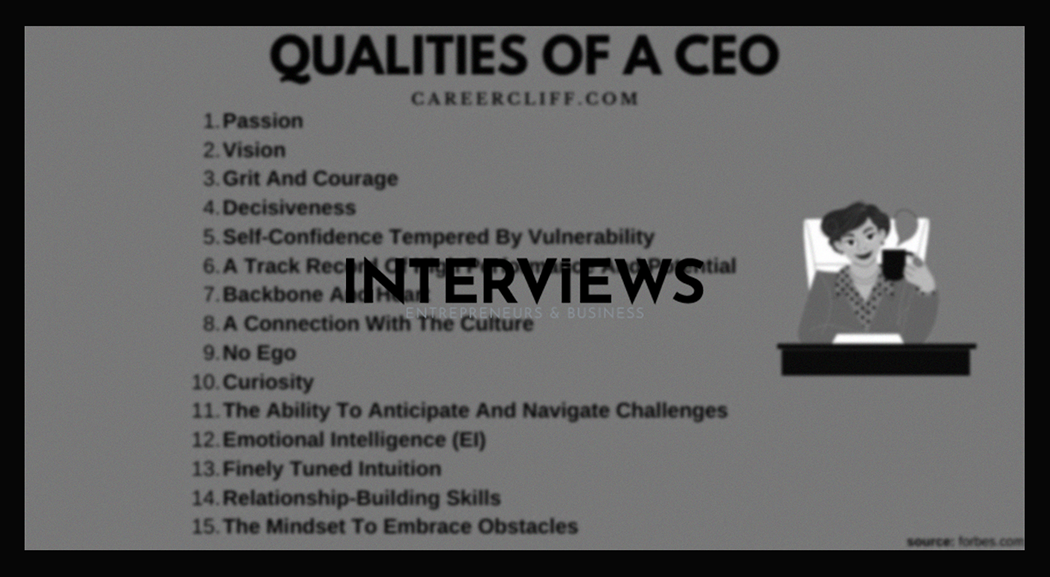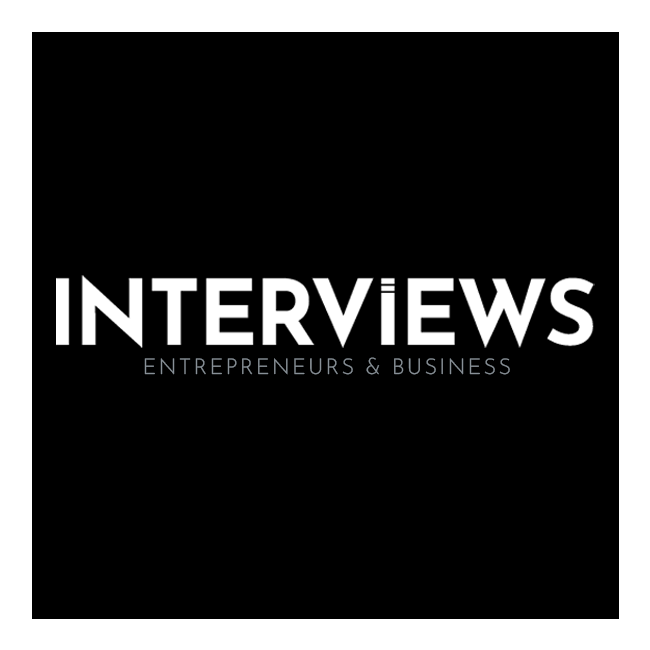Decoding the CEO Mind: What They Really Want to Know About You (and Your Ideas)
Ever wondered what’s on a CEO’s mind? It’s not just spreadsheets, folks. It’s about leadership, the company’s pulse, and where you fit in. Understanding their view isn’t just about climbing the corporate ladder. It’s about contributing to something bigger than your coffee mug.
I. Leadership and Management Style: Are You Leader Material (or At Least, Team Player Supreme)?
Thoughts on Leadership and What Makes a Good Leader
Let’s get to the point: leadership isn’t just about issuing commands. A good leader today works more like a guide. They navigate through business challenges with vision and empathy. Good leadership is about inspiring others, not instilling fear. It’s also about clear direction and careful listening.
Key qualities? Integrity – trust is essential. Vision – knowing your goal. Empathy – recognizing your team is made of humans. And decisiveness – at times, you must make tough choices.
Biggest Challenges Faced by Leaders Today
Leading today is like juggling fire while riding a unicycle on a tightrope – with wind! Leaders face swift changes, tech disruptions, and market shifts. Then there’s talent retention; keeping top performers engaged is hard work. The push for ethical and sustainable practices complicates it further.
Developing and Motivating Your Team: Unlocking Potential (Without Cracking the Whip)
Motivation isn’t about free food or hollow praise. People perceive that. It’s about creating a space where they feel valued, challenged, and grow. Invest in their growth – training, mentorship, chances to enhance skills. Encourage autonomy; no one enjoys micromanagement. Recognize their wins and, please, listen to their input.
Evolution of Leadership Style: From Dictator to Facilitator
Remember command and control? That style belongs to history. Today, it’s collaboration and empowerment. Leadership changed from dictating tasks to facilitating contribution. The goal? Create an environment where team members shine at work and contribute meaningfully. My style? Always evolving, learning from mistakes, and trying to do better.
Handling Criticism and Feedback: Turning Brickbats into Building Blocks
Criticism isn’t enjoyable, yet it’s necessary. The trick is not to become defensive. Listen actively, even if your inner voice protests. Seek the truth within feedback. It’s a gift, even if it stings. Use it to adjust and improve. Sometimes, feedback is wrong. Learn the difference; don’t take everything personally.
Fostering Continuous Learning and Improvement: Becoming a Company of Brainiacs
In fast-paced times, standing still equals moving backward. A learning culture is not optional; it’s vital. Encourage curiosity, experimentation, even failure! Provide resources for growth – workshops, online courses, invite quirky experts to inspire. Make questioning safe and welcome challenges to norms.
II. Company Performance and Strategy: The Big Picture (and Your Role in It)
How’s the Business Really Doing? And Where Are We Headed?
Let’s talk specifics. CEOs focus on performance. “How’s the business?” isn’t idle chat. They seek to know if things go smoothly or whether we’re heading for disaster. “Where next?” is the burning question. Are we expanding into fresh markets? Innovating products? Understanding the company’s path is crucial for all staff.
Challenges Facing the Business: Honest Talk, Not Sugar Coating
All businesses encounter challenges. Ignoring them is like driving blindfolded. CEOs must know real hurdles – are we losing market share? Is our tech outdated? Are supply chains tangled? Authentic assessment is key to solving problems. This knowledge helps employees grasp their work context and how they can help.
Customer Feedback: The Voice of the People (Who Pay the Bills)
Customers are vital for any business. What are they saying? Happy customers or lukewarm responses? Customer feedback, positive or negative, holds value. It says what works and what doesn’t. Grasping this feedback loop helps refine products, enhance services, and ensure customer loyalty.
Major and Exciting Projects: What’s Cooking in the Innovation Kitchen?
Big projects stir excitement. They drive growth and keep interest alive. Knowing major projects underway offers insight into company priorities and future direction. The “exciting initiatives ahead?” That’s what energizes staff, the plans that could be game-changers and provide engagement opportunities.
Next Big Milestone: The Summit We’re Aiming For
Every journey includes milestones. What’s the next one for the company? Reaching a revenue target, launching a new product, or breaking into a new continent? Knowing this gives purpose and direction. It binds everyone toward a universal goal and illustrates how daily efforts contribute to the bigger picture.
Standing Out from Competitors: Our Secret Sauce (and Why It Matters)
In a crowded market, distinguishing yourself is essential. What sets this company apart? Is it advanced tech? Exceptional customer service? A quirky culture attracting talent? Knowing our competitive edge builds success foundations. Awareness of what makes us special aids in communicating our value.
Company’s Top Priorities and Your Role: Connecting the Dots
Top priorities guide the organization. What are our main goals for the near future? Growth? Innovation? Market leadership? Most importantly, how does your role fit into these ambitions? Understanding this link between daily tasks and larger objectives fosters engagement and purpose at work.
Biggest Opportunities in the Next 6-12 Months: Where’s the Gold Rush?
Opportunity knocks, but you must listen. Where are our growth areas in the near term? Are markets untapped? Can emerging tech be utilized? Knowing these opportunities is akin to possessing a treasure map leading to significant impacts and new skill development.
Key Business Questions (KBQs): The Questions That Keep CEOs Up at Night
KBQs are vital inquiries every company must answer before launching products or services. They’re defining questions determining an idea’s success or failure. Do we understand our customers’ needs? Is our product solving a real issue? Can we deliver on promises? These questions drive critical thought, challenge assumptions, and ensure we build something valuable.
world actually wants.
III. CEO’s Role and Perspective: Walking a Mile in Their Shoes (or Power Suit)
How’s the CEO Coping? Humanizing the Corner Office
A CEO’s job is intense. It involves decisions, responsibilities, and scrutiny. “How’s the CEO coping?” is a human question. It highlights that they too are people. Recognizing their struggles, expectations, and pressures can foster empathy and a realistic view of leadership.
Biggest Learning Since Becoming CEO: Lessons from the Top
A CEO’s journey is a crash course in many areas. What insights have they gained? What’s the biggest eye-opener? Their experiences can provide insights into leadership and strategy. These lessons act as a cheat sheet for understanding the realities of running a company.
Path to Becoming CEO: The Road Less Traveled (or the Fast Lane)
Career journeys vary. The path to CEO is often winding and wild. “What was your path?” Exploring their career story, while highlighting twists and turns, lucky breaks, and strategic moves, shows there’s no single way to reach the top. Perseverance matters more than a straight plan.
Why CEO of *This* Company? Passion Beyond the Paycheck
Why this company or role? It involves more than perks and paychecks. There’s often a deeper drive, connection, or belief in the mission. Understanding their motivation to lead this organization reveals their values and helps create a more meaningful connection.
Biggest Challenges Overcome as CEO: Battles, Scars, and Hard-Earned Wisdom
Every CEO faces storms: market downturns, competition, and crises. “What challenges have you overcome?” Hearing such stories shows resilience and grit. It emphasizes that leadership isn’t about avoiding issues; it’s about navigating them and learning from experiences.
Outside Interests: CEOs Unplugged (Occasionally)
CEOs aren’t just robots. They have lives outside their roles. “What are your outside interests?” Knowing hobbies and passions makes them relatable. It highlights the importance of work-life balance, reminding us that even top leaders need time away.
IV. Employee Engagement and Company Culture: The Heart and Soul of the Workplace
Thoughts on Company Culture: More Than Just Free Coffee and Beanbag Chairs
Company culture may seem like a buzzword. Yet, it shapes interactions and feelings in the workplace. “How would you describe your culture?” Is it collaborative or risk-averse? Knowing the values and unspoken rules helps navigate effectively and see if you fit.
What Do You Expect from Your Employees? Setting the Bar High (But Fairly)
Expectations exist everywhere. What does the CEO expect from staff? Hard work? Loyalty? Understanding these explicit and implicit demands is crucial for both meeting and exceeding them. It shows what success means to them.
One Thing You’d Change About the Company? Honest Reflection, Path to Improvement
No company is perfect, even those with comfy perks. “What’s one thing you’d change?” This invites honest reflection and shows where improvement is needed. It signals a commitment to growth and that feedback is welcome.
V. Personal and Fun Questions: Getting to Know the Human Behind the Hustle
Secret Talent? Fun Facts and Hidden Depths
Let’s lighten things up. “Do you have a secret talent?” Perhaps the CEO is an opera singer or can solve a Rubik’s Cube quickly. These tidbits remind us that they are human with interests beyond professionalism.
What Do You Do For Fun? Beyond Board Meetings and Budgets
Work hard, play hard. “What do you do for fun?” How does the CEO unwind? Knowing if they hike, binge-watch shows, or collect items gives insight into their personality outside professional life. Everyone needs downtime.
How Do You Relax? Stress Management at the Top
Stress comes with leadership. “How do you relax?” Is it yoga or watching TV? Learning their stress-relief techniques promotes valuable ideas for your own management strategies. You might try something new.
First Job? From Humble Beginnings to High Places
Everyone starts somewhere. “What was your first job?” Maybe it involved burgers or newspapers. Hearing about humble beginnings is relatable and grounding. Success is a journey, not just a destination.
Craziest Thing You’ve Done? Adventures and Risk-Taking (Inside and Outside the Office)
Everyone has a ‘crazy’ story. “What’s the craziest thing you’ve done?” It might be adventurous or risky. Such tales reveal a willingness to embrace the uncertain, important traits in leadership.
What Gets You Up in the Morning? Purpose and Passion, Pre-Coffee
Motivation drives us. “What gets you up in the morning?” Is it solving complex problems or making an impact? This understanding reveals their core values and what fuels their ambition.
What Motivates You? The Inner Drive Behind the Outer Success
Motivation runs deeper than morning routines. “What motivates you?” Is it achievement or making a difference? Knowing core motivators provides insight into leadership style and emphasizes values.
VI. Standing Out and Making an Impression: How to Get Noticed (the Right Way)
Be Concise: Time is Precious, Get to the Point
CEOs are very busy. Respect their time with concise communication. Don’t waffle. Get straight to the point. Clarity and brevity will serve you well. Think elevator pitch instead of long explanations.
Listen Actively: Engage Your Ears, Not Just Your Mouth
Listening actively is essential. Show genuine interest in their words. Nod, make eye contact, ask questions, and respond thoughtfully. This builds rapport and shows respect for their message.
Ask Insightful Questions: Show You’ve Done Your Homework (and You’re Smart)
Avoid generic questions. Impress with inquiries that show you’ve thought about the company’s challenges. Prepare questions that demonstrate knowledge and interest. This signals engagement and strategic thinking.
Show Confidence (Not Arrogance): Believe in Yourself (Without Being a Jerk)
Confidence attracts, but arrogance repels. Project confidence in your ideas while avoiding cockiness. Know your worth while staying humble. Navigating this line is critical.
Demonstrate You Care About the Whole Business: Think Beyond Your Cubicle
Show awareness of the big picture. Express interest in overall success, not just your own role. Demonstrate understanding of how different parts fit together.
Understand how your work fits into larger goals. Think in a holistic way. Avoid working in silos.
Find Solutions: Be a Problem Solver, Not a Problem Finder
Every company has issues. Be the one who offers solutions instead of just complaining. Look for inefficiencies and propose changes. Companies value problem-solving skills. A solution-oriented mindset makes you essential.
Volunteer for Challenging Projects: Take Initiative
When faced with tough projects, many people hesitate. Volunteers for these projects show initiative. They learn skills and gain visibility. Accept the challenge, step out of your comfort zone, and show readiness for hard tasks.
Support Others: Collaboration is Key
Success is not achieved alone. Be a team player. Help colleagues succeed. Being collaborative creates a supportive atmosphere. This reflects well on you and strengthens the workplace. Lift others as you climb up the ladder.
VII. Communication and Interaction: Engaging with CEOs
Be Direct: Communicate Clearly
Effective communication matters, especially with busy CEOs. Be clear about what you need or suggest. Be concise; avoid unnecessary details and jargon. Get to your point quickly and effectively.
Personalize Your Messages: Make It Relevant
Generic messages fall flat. Personalize your communication. Tailor your message to the individual and context. Show you understand their priorities. This approach demonstrates respect for their time and attention.
Be Genuine: Be Yourself
Authenticity attracts people. Be yourself rather than someone else. Genuine enthusiasm works better than forced formality. Let your true self show within professional limits.
Listen Actively: Engage Fully
Active listening deserves emphasis. Pay attention and engage with the speaker. This shows respect and builds understanding, fostering communication. In discussions with a CEO, aim to listen at least half of the time.
Know the Mission: Show Investment
CEOs want to see your understanding of the company’s mission. Show enthusiasm for contributing to these goals. Demonstrate that you are not just there for a paycheck but care about the company’s success.
Strategic Thinking: Show Understanding
Strategic thinkers are valued by CEOs. Highlight your critical thinking and problem-solving skills. Show your capability to analyze situations and develop solutions. Your ability to think strategically and anticipate problems will be appreciated.
In summary, understanding a CEO’s perspective is not complicated. It requires empathy, preparation, and a desire to contribute. Address any concerns, and show that you are a valuable asset, not just another employee. Someday, you might occupy that corner office, wondering about your team’s thoughts.




